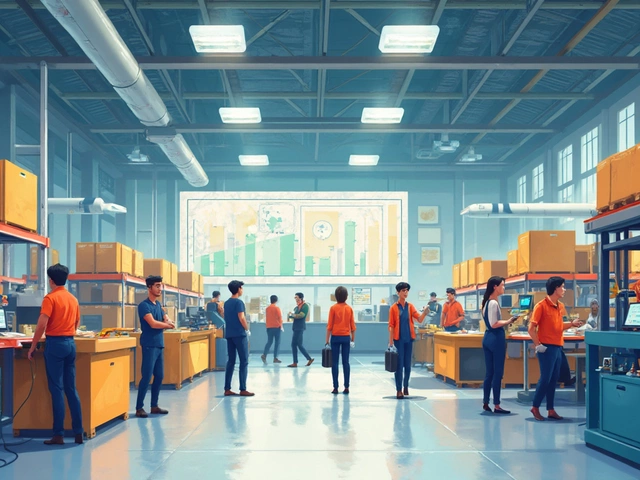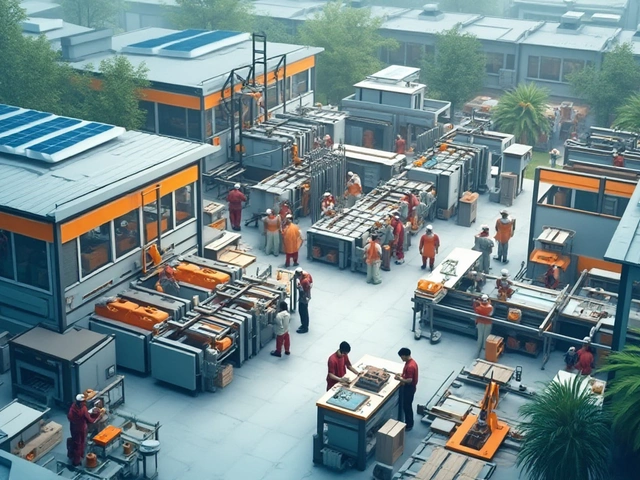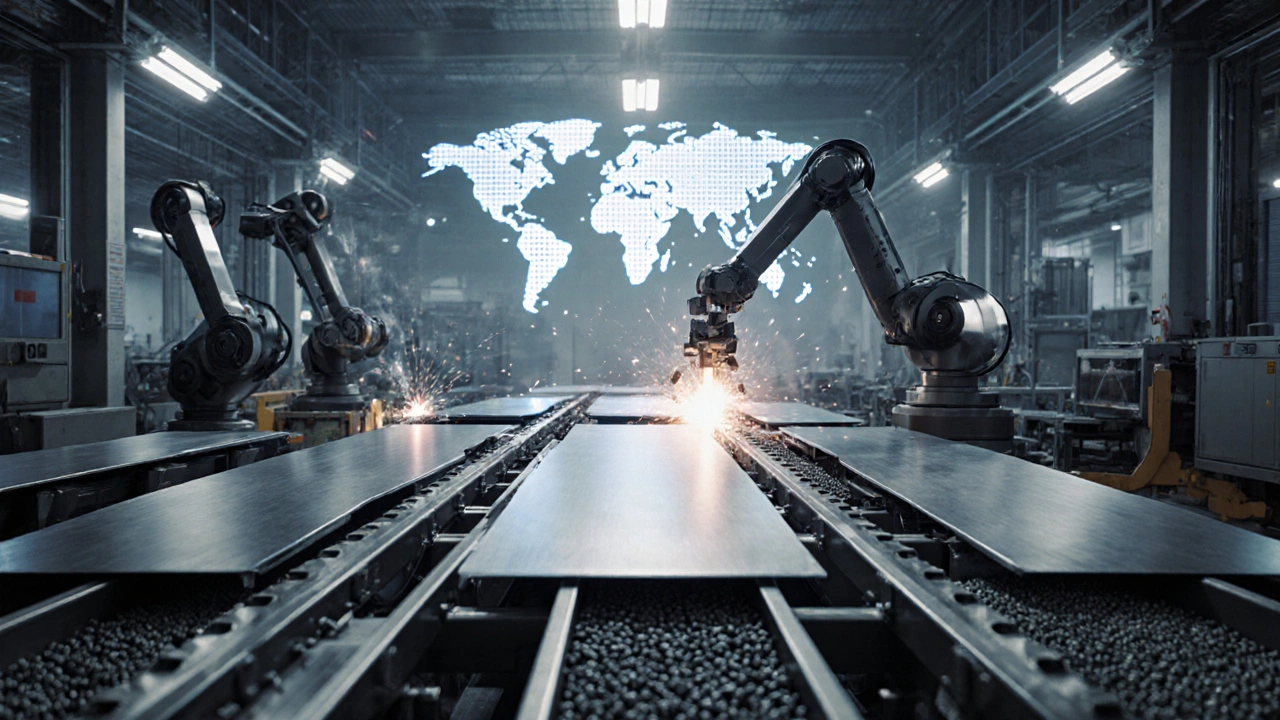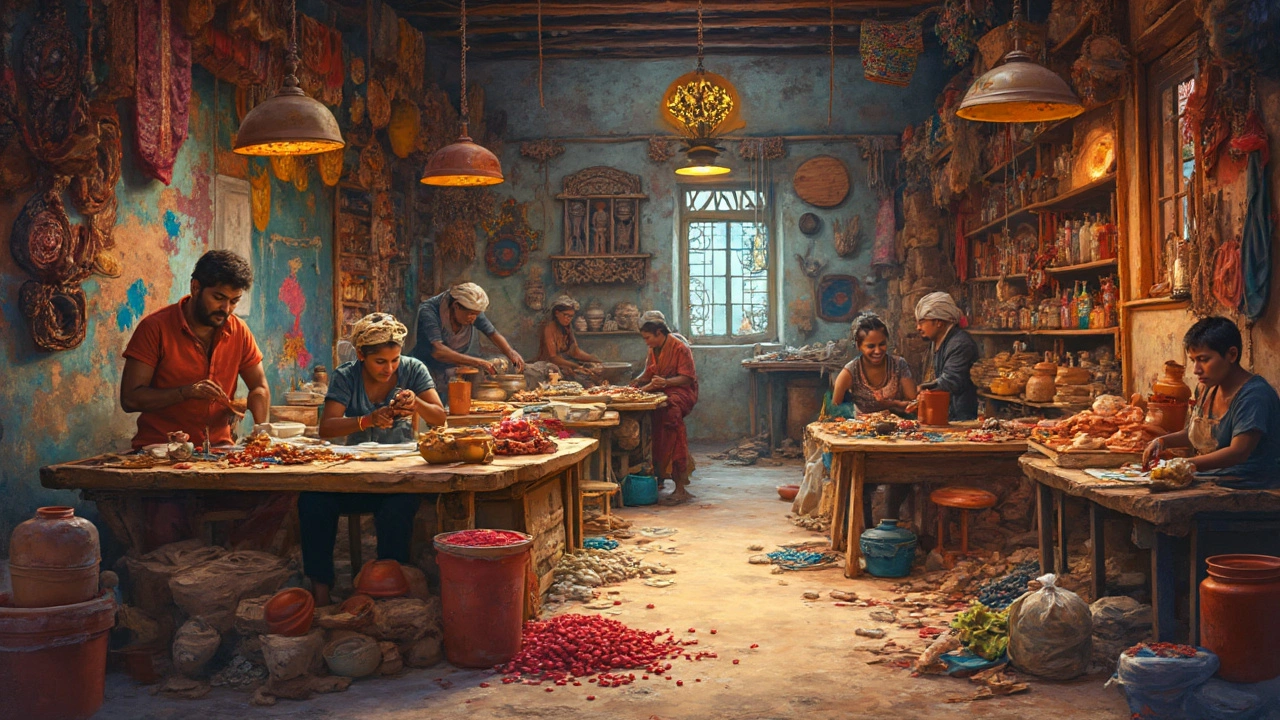Manufacturing Job Multiplier Calculator
Discover how manufacturing jobs create additional employment opportunities. Based on data showing each manufacturing job creates approximately 2.5 total jobs (direct and indirect), this calculator helps you estimate the economic impact of manufacturing employment.
Total jobs created:
0
Based on the 2.5 job multiplier effect (each manufacturing job creates approximately 2.5 total jobs across the economy)
When we talk about manufacturing is a sector that transforms raw materials into finished goods, driving economic activity worldwide. Ever wondered why countries pour billions into factories and why policymakers keep shouting about “manufacturing jobs”? The answer lies in a chain of effects that touches everything from your paycheck to the price you pay for a smartphone. This article unpacks the ways manufacturing fuels the economy, dives into the numbers, and shows how government schemes keep the wheels turning.
Manufacturing’s share of Gross Domestic Product
Gross Domestic Product (GDP) is the total market value of all finished goods and services produced within a country in a given period. In 2023, manufacturing accounted for roughly 12% of global GDP, according to the World Bank. That may sound modest, but the real punch comes from the high‑value‑added nature of many manufacturing processes. For instance, advanced robotics assembly lines generate far more output per worker than a typical service role, lifting overall productivity.
Consider the United States: manufacturing contributed $2.3 trillion to the 2022 GDP, pushing the nation’s total economic output above $25 trillion. In emerging economies like Vietnam, the share climbs to nearly 20%, reflecting a strategic focus on building export‑oriented factories.
Job creation and wage benefits
Employment in manufacturing is a cornerstone of stable, middle‑class jobs. Manufacturing wages tend to be 20-30% higher than the average earnings in the retail or hospitality sectors, according to the International Labour Organization. The reason? Skilled roles such as CNC machinists, process engineers, and quality inspectors require specialized training, which commands better pay.
Beyond direct hires, each manufacturing job supports roughly 1.5 ancillary positions in logistics, maintenance, and supply‑chain services. This multiplier effect means a single new factory can create dozens of indirect jobs in the surrounding community.
- Average manufacturing hourly wage (US, 2024): $28.5
- Average service sector hourly wage (US, 2024): $19.2
- Job multiplier: 2.5 total jobs per factory position
Export revenue and trade balance
Exporting manufactured goods fuels a nation’s trade surplus. In 2024, Germany’s “Made in Germany” label helped generate €1.2 trillion in export revenue, representing 40% of the country’s total exports. The United Kingdom, after Brexit, has leaned heavily on aerospace and automotive manufacturing to keep its trade balance positive.
Export‑oriented manufacturing also stabilises currencies. When demand for a country’s products spikes, foreign exchange earnings rise, supporting lower inflation and cheaper imports for everyday consumers.
Innovation, productivity, and the spill‑over effect
Innovation thrives in manufacturing environments that blend research, development, and real‑world testing. Think of the smartphone: every year, factories adopt new automation, materials, and assembly techniques that push the tech envelope forward.
Productivity gains cascade to other sectors. A more efficient auto plant reduces component costs, which in turn lowers transportation expenses for the logistics industry. These savings trickle down to consumers as lower prices.
Key statistics:
- Automation has lifted manufacturing output per hour by 35% worldwide since 2015.
- Every $1 billion invested in R&D within manufacturing yields an estimated $2.5 billion in total economic output.

Government schemes that keep factories humming
Government schemes such as tax credits, subsidies, and training grants are the backstage crew that ensures manufacturers stay competitive. In New Zealand, the “Advanced Manufacturing Growth Fund” (AMGF) allocated NZ$150 million in 2023 to help firms adopt robotics and AI.
Australia’s “Modern Manufacturing Strategy” offers up to 30% rebates on capital equipment, while the United Kingdom’s “Enterprise Zones” grant reduced business rates for factories located in designated areas.
These programs share three common goals:
- Boost capital investment in cutting‑edge equipment.
- Raise the skill level of the workforce through apprenticeships.
- Encourage export‑focused growth by facilitating market access.
The supply‑chain multiplier
Manufacturing doesn’t operate in isolation; it anchors an entire supply network. When a car factory orders steel, electronics, and paint, dozens of suppliers receive orders, each of which may source raw materials from separate regions. This cascade of demand sustains mining, chemical processing, and logistics firms.
According to a 2022 Deloitte study, for every $1 million spent on manufacturing equipment, roughly $2.3 million circulates through the broader supply chain within the first two years.
Challenges and the road ahead
Despite its perks, manufacturing faces headwinds: rising energy costs, supply‑chain disruptions, and skills shortages. Climate‑policy pressures are pushing firms toward greener processes, which require upfront investment but promise long‑term savings.
Future‑proofing strategies include:
- Adopting renewable energy sources on‑site.
- Investing in digital twins to simulate production and cut waste.
- Partnering with vocational schools to create pipelines of skilled technicians.
When governments align policy with industry needs-like New Zealand’s recent “Zero‑Carbon Manufacturing Plan”-the sector can continue to be a powerhouse of growth.
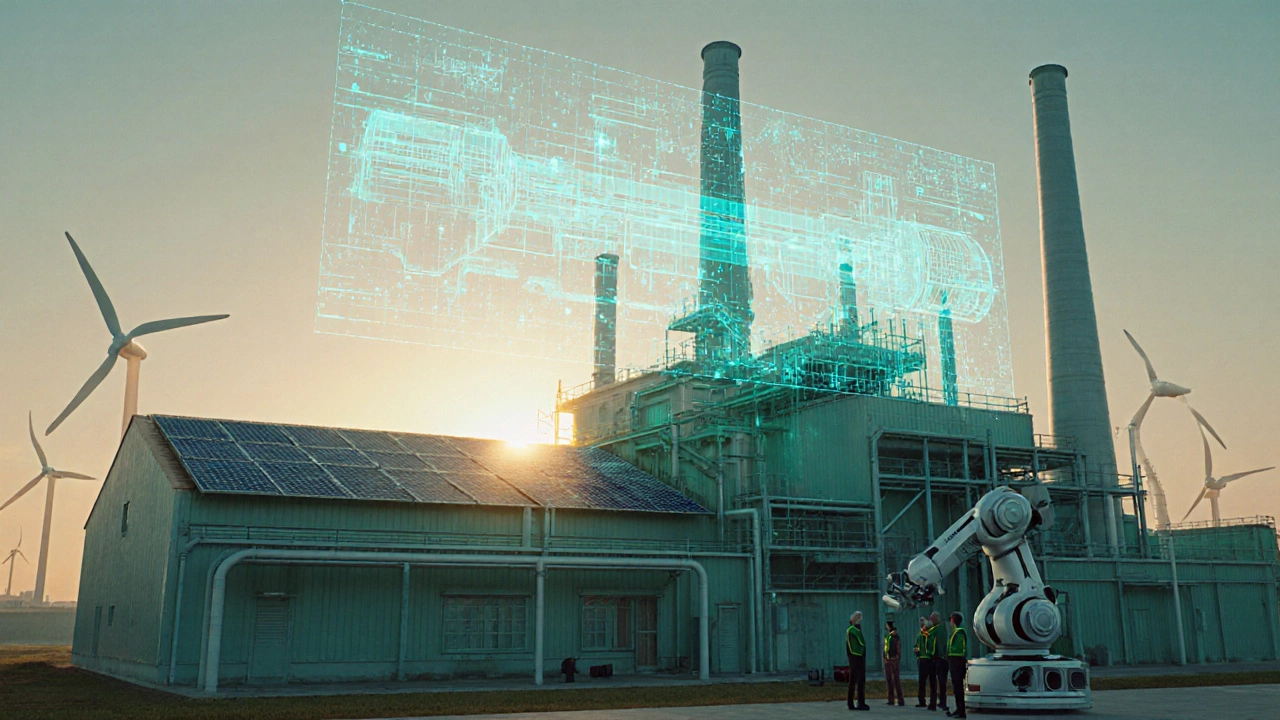
Quick checklist: How to leverage manufacturing for economic gain
- Identify high‑value‑added manufacturing niches (e.g., medical devices, advanced composites).
- Map local government incentives and apply early.
- Invest in workforce upskilling to secure higher‑paid jobs.
- Integrate renewable energy to lower long‑term operating costs.
- Track export markets and diversify to mitigate trade shocks.
Frequently Asked Questions
How much does manufacturing contribute to national GDP?
The share varies by country, but globally manufacturing accounts for about 12% of total GDP. In industrialised economies it ranges between 10%‑15%, while some emerging markets see shares above 20%.
Can manufacturing create high‑skill jobs?
Yes. Roles such as CNC operators, process engineers, and quality assurance specialists require technical training and often pay 20‑30% more than average service‑sector positions.
What are the most common government schemes supporting manufacturers?
Typical schemes include capital‑equipment tax credits, R&D grants, workforce‑training subsidies, and export‑promotion incentives. Examples are New Zealand’s Advanced Manufacturing Growth Fund and the US “Tax Credit for Investment in Manufacturing”.
How does manufacturing affect a country’s trade balance?
Export‑oriented manufacturing generates foreign‑exchange earnings, which can offset imports and improve the trade balance. Nations with strong manufacturing exports, like Germany and South Korea, consistently run trade surpluses.
What future trends will shape manufacturing’s economic role?
Key trends include increased automation, adoption of AI‑driven predictive maintenance, greener production methods, and growing emphasis on reshoring to reduce supply‑chain risk.
Conclusion: Why manufacturing matters for every citizen
From the cars you drive to the groceries on the shelf, manufacturing is the invisible engine that powers jobs, trade, and innovation. When governments align policies with industry needs, the sector becomes a catalyst for higher wages, stronger exports, and a more resilient economy. Understanding this connection helps voters, investors, and entrepreneurs make smarter choices that benefit the whole country.
| Indicator | Impact of Manufacturing | Typical Value |
|---|---|---|
| GDP Share | Direct contribution to national output | 10‑15 % in developed economies |
| Employment Multiplier | Jobs created per manufacturing position | 2.5 total jobs |
| Export Revenue | Share of total exports | 35‑45 % in export‑focused nations |
| Innovation Index | R&D intensity (R&D spend ÷ sales) | 3‑5 % |
